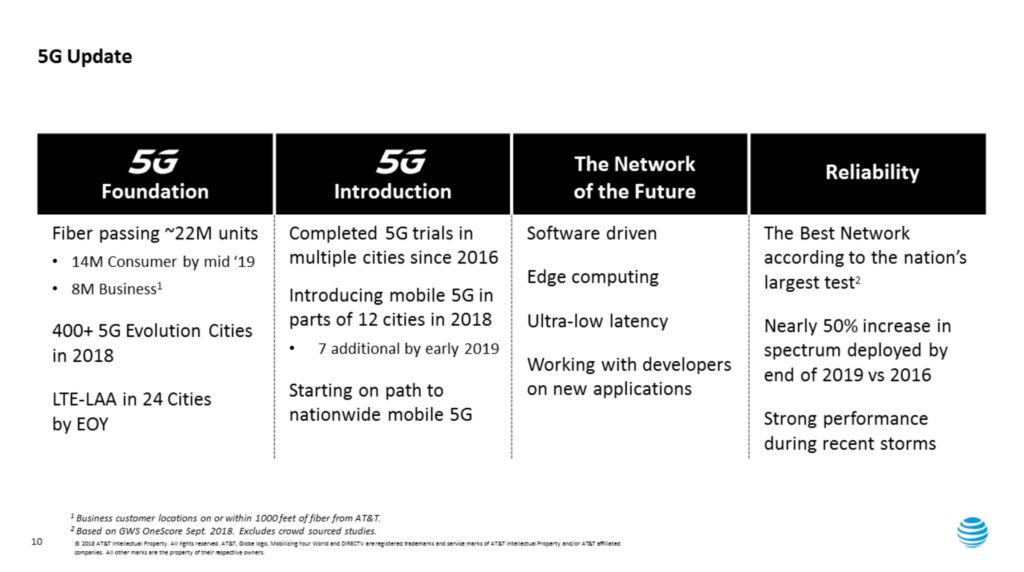First actual 5G networks ready for consumers

For several years, mobile phone networks used the term 5G as their “shiny new thing” – something cool to dangle in front of customers long before anyone had actually settled on what it actually meant.
Both AT&T and Verizon are now ready to turn on their first pieces of 5G coverage, and T-Mobile/Sprint (if that ever becomes a thing) has settled on a company to build their 5G network for a Q1 2019 launch. Of course, coverage isn’t worth anything without devices, so several phone makers have actually announced their initial 5G handsets.
Suddenly 5G is sounding like a real thing… For those of us who consider themselves roadwarriors, could 5G finally put an end to relying on lousy hotel Wi-Fi, spotty 4G or broken plugs in the business center?. Actual 5G speeds are hard to get from the networks, Verizon is especially tight-lipped, forecasting “data transfer rates many times faster than a blink of an eye” (real quote).
The depressing reality behind these announcements is service is being installed one city at a time, just like we saw when the first 3G and 4G networks were turned on. But 5G brings one more complication, and that is mostly due to something called “millimeter wave”. All you really need to know about millimeter waves is that they are really, really hard to get from a base station to a phone. Because of this, the initial roll-out is focusing more on getting high speed internet to home users. Both AT&T and Verizon see their initial 5G roll-out as something to put up against companies like Comcast/Xfinity. This doesn’t mean that we won’t ever see gigabit speeds on our mobile devices – the first gigabit capable devices are already out there, and current LTE networks have the ability to supply the bandwidth, but this is still based off 4G technology. It’ll be at least 2020 till we can download a 4K movie in 30 seconds on our phones.
